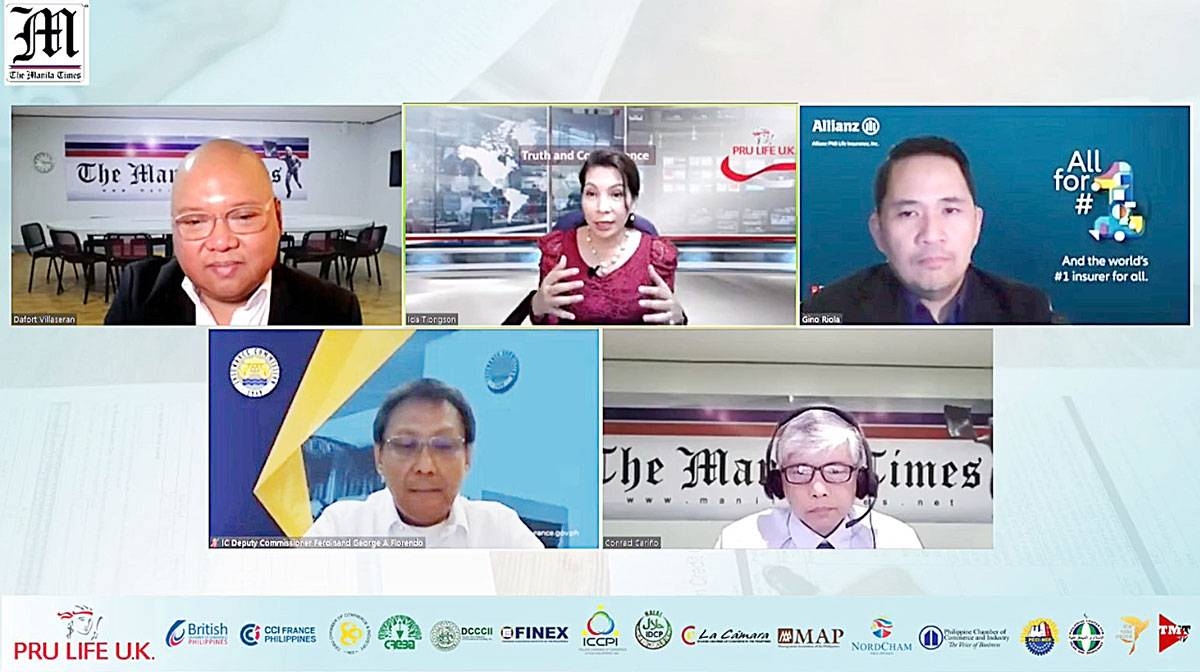
Poor financial literacy among Filipinos has slowed the growth of the Philippine insurance industry, an official of the Insurance Commission (IC) said on Tuesday.
During the The Manila Times forum “Insurance Truth and Consequence,” IC Deputy Commissioner Ferdinand George “Bong” Florendo, citing a report on Sept. 9, 2022, which cited a World Bank report, said the Philippines lags behind its Southeast Asian neighbors in terms of financial literacy. The Philippines had a 25 percent rating, compared to 59 percent in Singapore and 36 percent in Malaysia.
“This relatively low level of financial literacy in the country certainly contributes to the slow growth of the Philippine insurance industry,” Florendo said.
“On the economic side, the prevalent poverty contributes to the low financial literacy in the country. Despite being among the fastest-growing economies in the region, poverty remains to be a pressing issue.”
Citing figures from the Philippine Statistics Authority, the insurance official pointed out that 3.5 million Filipino families lived in poverty in 2021.
“For these families that already struggle in meeting the most basic necessities, insurance is a discretionary expense. This is true, not only in the Philippines, but in other jurisdictions, as well,” he said.
“Because the Philippines has more people below the poverty line, the insurance industry has experienced a steeper decline in premium income,” Florendo added.
Another factor affecting financial literacy, he said, is the public thinking that the insurance industry is only all about death and accidents.
“This negative reputation surrounding anything insurance-related tends to make insurance products less appealing to many Filipinos,” Florendo added.
Other factors include geographic constraints, perceived unreliability of insurance companies and concerns about timeliness of claims payments.
Because of poor financial literacy, the country’s insurance penetration rate has not gone above 2 percent, despite the IC reporting P2 trillion worth of assets for the insurance industry, as well as a 50 percent increase over the past six years in terms of premium income from P253 billion in 2016 to P379 billion in the first half of this year.
“While the Philippine insurance industry continues to grow, these numbers still lag behind other jurisdictions,” the official said.
Microinsurance programs put in place since the mid-2000s, Florendo said, remains the focus of the industry.
These programs are “intended to complement microfinance and micro-entrepreneurship.”
The Insurance Commission “continues to put in place measures to improve the level of financial literacy in the country, to improve the insurance penetration rate and to address issues and misconceptions related to the insurance industry,” Florendo said.
The Philippines is known to be at the forefront of microinsurance, he added.
“As of the second quarter of 2022, the contribution or premium production of the sector has reached P5.5 billion. This reflects a 197-percent increase from P1.9 billion in 2017. The growth of the microinsurance industry is the product of the coordinated efforts of the IC, the private insurance companies, the BSP (Bangko Sentral ng Pilipinas) and the SEC (Securities and Exchange Commission),” Florendo said.
The IC, according to him, is conducting financial literacy seminars and workshops in the provinces so the public will get to understand what microinsurance is and also get a firmer grasp of financial literacy.
Meanwhile, Gino Riola, chief marketing officer and head of sustainability of Allianz PNB Life, said their key sustainability initiative to reach far-flung communities that still need to be made aware of financial literacy is the Kaagapay program.
“Kaagapay is a program that we believe is of extreme value and we look forward to reaching out to more communities, with the help of local government units,” Riola added.
He said he also believes that it is important to raise the expertise of financial advisers.
“And we do this by way of making sure that they always look at what our customers need,” Riola added.
Imelda “Ida” Tiongson, Pru Life UK chairman, said financial literacy begins as early as childhood, where children practice “earn, save, spend, donate” through the Cha-Ching Curriculum Financial Accreditation program.
“We want to start them young,” Tiongson said.
“When we feel that for as little as P50 per month, you know that you would be able to establish, at a young age, creditworthiness, and by the time they grow up, they would know how to go and invest,” she added.
Pru Life’s program had reached over 200,000 students nationwide and certified more than 2,400 schools to teach financial education.
